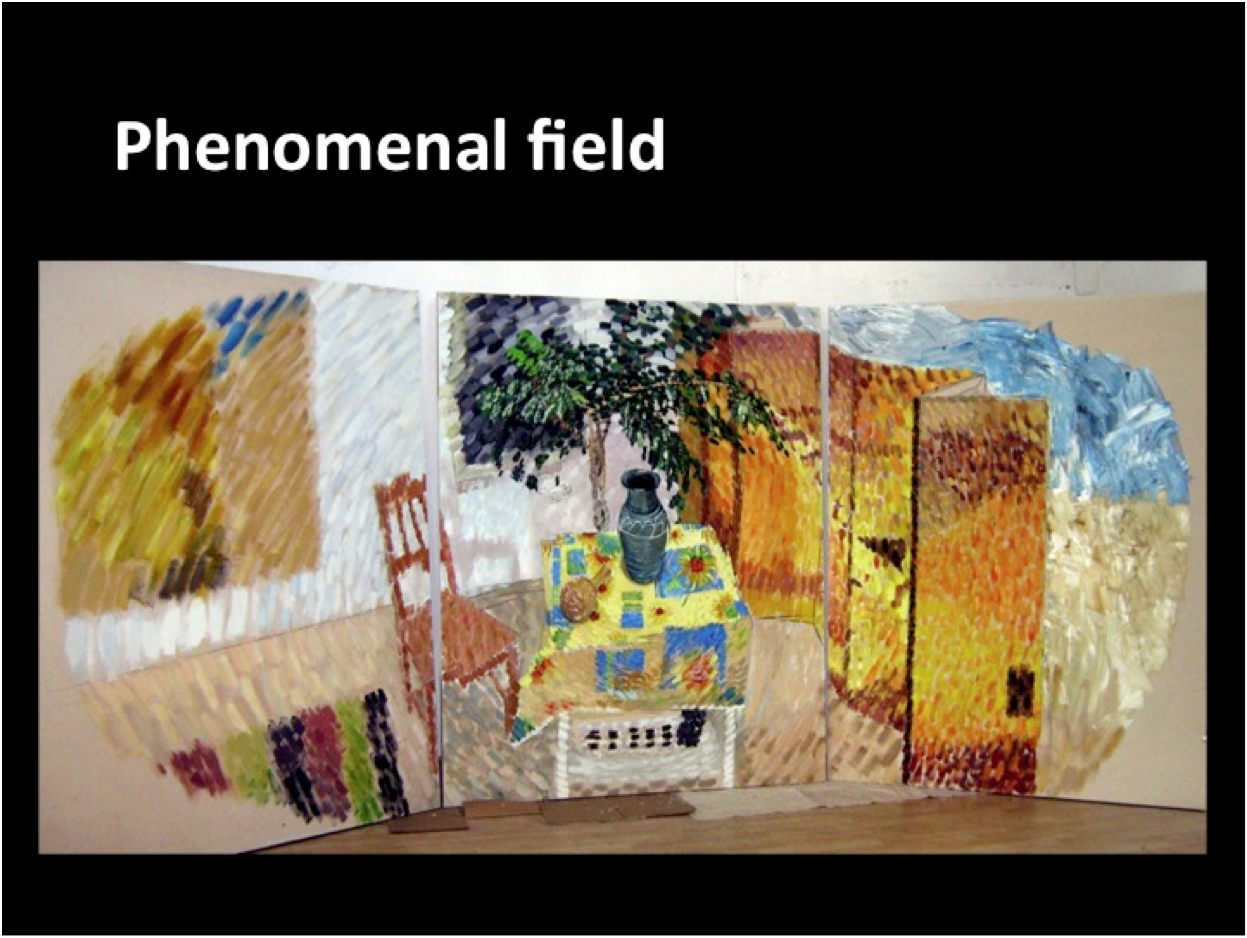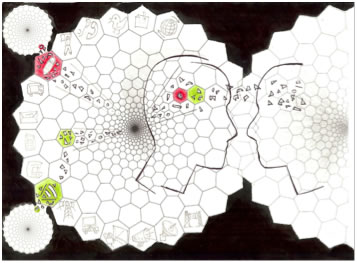Perceptually Structured Communications
A communications platform for the 21st Century. Placing perceptual awareness at the heart of our communication systems
Vision-Space models visual awareness with its explicit – ‘what’ and implicit contextual – ‘where’ pathways, processes and characterisations. It reflects a functional understanding of perceptual structure that reaches beyond our current confines enabling us to think strategically about how we can improve:
- Information Communication Technologies
- The way organisations are structured and operate with respect to social media the internet and internal and external communications

© Perceptual Awareness Centre 2014
Perception and Communication:
Effective communications lie at the heart of an organisation’s operations, how it presents itself and how it is perceived making the processes involved business critical. In forming our relationships we develop perceptions that become our realities.
The human perceptual system performs in ways that remain well in advance of our current technologies. We now understand how to apply the insights to an organization’s communication systems to enhance the efficiency and saliency of communications.
The difference between pictures and images>

Current limitations:
Existing Information Communication Technologies (ICTs) and general approach to communications contribute to process akin to the projection of a 'virtual reality' that is often remote, decontextualized and inefficient inhibiting the communication of meaning (content, context and intent). In terms of communications this can lead to channel silos, can feel remote, out of context and can lead to misunderstanding of meaning and intent.

Advantages:
The application of PSC presents the opportunity to increase:
- The cohesiveness of an organisation
- Situational awareness leading to anticipation and preemptive action
- Appropriate and measured responsiveness to a situation
- Speed of messaging and its comprehension
- Effective targeting of communications (audience segmentation)
- The overall effectiveness and salience of communications

Perceptual Technologies:
We are looking for a commercial organisation currently working in this area to work with us to develop a platform technology for 21st century communications.
Vision-Space is a new form of illusionary space based on perceptual structure that models visual awareness. Independent TRIZ analysis establishes the technology as representing a paradigm shift for all forms of information display, highly disruptive, with over 200 applications across 12 industries. The ongoing research agenda is being pursued in association with Cardiff University and the vision science forums.
Research and Development
At the experiential level we can directly express an awareness of our sensory processes through creative activities including visual art, music and dance. In support of perceptual awareness we have also derived sophisticated ways in which to communicate such a language and symbols that combine sensory inputs, in the case of spoken and written language, vision and audition. These systems 'emerged' or ‘self organised' more than they were the result of a conscious conceptual approach to a problem that needed solving. As such these intuitive manifestations are enmeshed with our perceptual structures and can be considered to form a natural extension to it.
Experiential Research Atelier (ERA)>

We can’t say the same about our technologies and the artificiality of the virtual worlds we have constructed with them. ICT’s have derived from a purely conceptual approach to the nature of reality and their outputs are limited by the preconditions inherent in their conception, design, processes and functions. The photographic media and current information display systems can’t fully stand in for a visual encounter. In the same way the microphone and loudspeaker cant fully stand in for an auditory encounter. We need to understand and account for the perceivers' share. Our communications systems reflect these shortcomings and can lead to incomplete, inefficient, and sometimes misleading impressions and ultimately poor decision-making.


